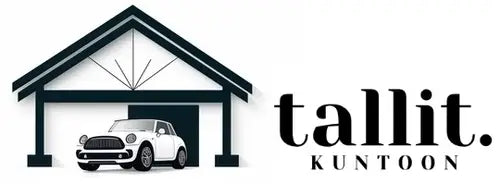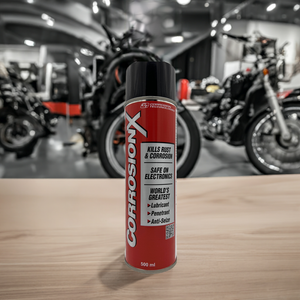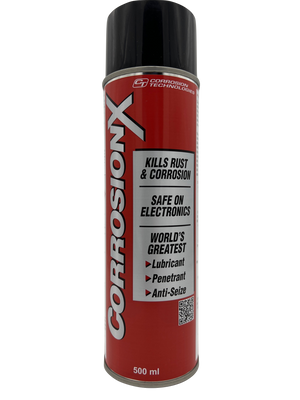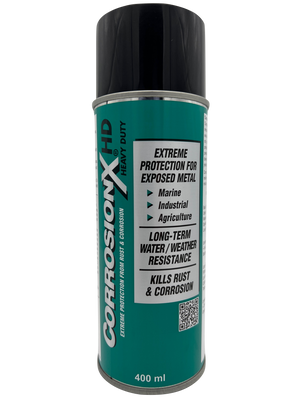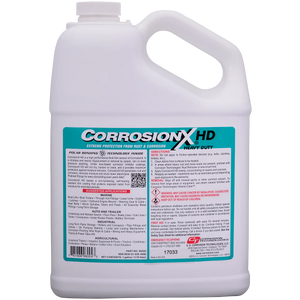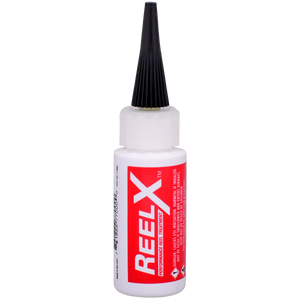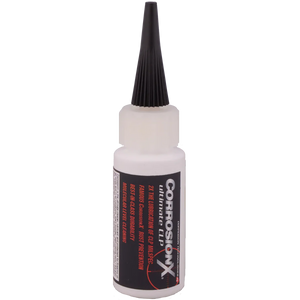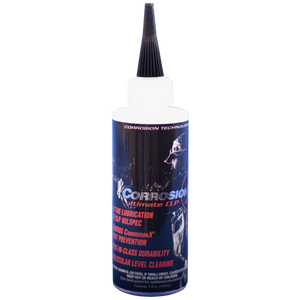Have you ever hopped on your bike on the first warm day of spring, brimming with excitement to finally pedal under the sun, only to realize your chain is squeaking like an old, creaky door? Or perhaps you’ve tried to brake on a damp autumn morning and felt that hair-raising delay in response? Moments like these remind us that bikes, just like cars or any other mechanical wonders, thrive on careful, regular care. And when it comes to adjusting to the whims of Mother Nature—be it the scorching heat of summer, the wet chill of autumn, or the biting cold of winter—seasonal maintenance becomes even more crucial.
In this comprehensive guide, we’re going to take a deep dive into why seasonal bike maintenance matters so much. We’ll explore how different weather conditions can threaten your ride’s performance and lifespan, and then unveil some practical tips to keep it in tip-top shape all year round. Finally, we’ll talk about a brilliant solution for lubrication and rust prevention: CorrosionX SpeedX. This outstanding product is specifically designed for your bike chain, bearings, and even those skateboard or roller skate wheels that might need a little TLC. By the end of this read, you’ll be well-equipped to keep your bike (and other wheeled gear) running like a champ, season after season.
So grab your favorite beverage, settle in, and let’s explore the wonderful world of bike maintenance. Your trusty two-wheeled companion (and maybe even your roller skates) will thank you.
Why Seasonal Bike Maintenance Is Non-Negotiable
Sometimes, we forget that a bike is more than just a couple of wheels and a metal frame. It’s a finely tuned mechanical puzzle composed of moving parts that depend on each other. When the seasons change, temperature fluctuations, moisture levels, dust, salt on the roads, and even varying daylight hours can all affect how these parts interact. Think of your bike as a living, breathing system that needs to adapt to its environment—just like you bundle up with a thick coat in winter or opt for breathable clothes in summer, your bike also needs some seasonal adjustments to stay comfortable and functional.
Weather as the Ultimate Challenge
One of the biggest threats to your bike’s health is the weather. No matter where you live, weather patterns can change dramatically from one season to the next. If you’re in a place with distinct winters and summers, that’s even more pronounced. Rain can wreak havoc by encouraging rust on metallic components. Snow and ice can clog up your drivetrain. Heat can dry out lubricants more quickly. Dusty environments increase friction. Even mild fluctuations in humidity can expedite corrosion if the metal is unprotected.
But it’s not just rust and corrosion that we worry about. Wet conditions mean water can seep into places it shouldn’t, like your bearings, bottom bracket, or inside your chain links. Over time, moisture left unchecked can cause pitting and other forms of metal degradation that could eventually lead to snapped chains or seized bearings. It’s not just about aesthetics or minor squeaks—neglected weather-related damage can become a safety hazard if a critical component fails during a ride.
The Price of Neglect
You might be tempted to skip a maintenance check or two, especially if you’re only an occasional rider. But would you trust a car that never undergoes an oil change, tune-up, or tire rotation? Probably not. A neglected bike can start giving you subtle clues of distress—like squeaky brakes, difficulty shifting gears, sluggish pedaling, or that unnerving click whenever you go over a bump. These are the alarm bells of impending trouble.
Ignoring these signs can lead to bigger expenses down the road. A rusted chain could lead to premature wear on the cassette. A misaligned derailleur could break if you force it too long. Worn-out brake pads can damage wheel rims or rotors. It’s a domino effect that isn’t just expensive—it’s also potentially dangerous. Regular seasonal maintenance acts like a vaccine: a little effort now can prevent major problems later.
Boosting Longevity and Enjoyment
Another big bonus of seasonal bike maintenance is the extended lifespan of your ride. Treat your bike’s components with care, and they’ll reward you with many more miles of smooth operation. A long-lasting bike means you won’t have to frequently replace expensive parts, and you’ll spend more time doing what you love: riding.
Moreover, a well-maintained bike simply feels better. Ever ridden a freshly tuned bike and felt that magical smoothness in every pedal stroke? It’s almost like riding on clouds. Regular upkeep helps you consistently experience that “like-new” sensation. Whether you’re commuting, training, or just riding for pure joy, a bike that’s regularly maintained is a bike that behaves well. It’s a good relationship—you respect it with proper care, and it repays you with reliability and performance.
Decoding Weather’s Impact on Your Bike
Weather can sometimes feel like a silent saboteur to mechanical devices. Bikes, in particular, are constantly exposed to the elements. Let’s drill down into the different weather conditions and get a sense of exactly how they can mess with your beloved two-wheeler. You’ll see how each season comes with its own set of caution signs—and how to beat them at their own game.
Spring: Reawakening Your Bike
Spring is all about renewal. Flowers bloom, birds sing, and cyclists emerge from winter hibernation. After months of cold, possibly wet or icy conditions, your bike might be due for a thorough once-over. Spring is a time to clean off any residual road salt, sludge, or mud that has accumulated during winter rides. If your bike spent winter in storage, dust and dryness could still present concerns.
Spring weather can also swing unpredictably between sunny days and sudden showers. Precipitation means an increased risk of rust forming on unprotected metal. If you’re someone who loves those refreshing spring rides, be prepared for sudden downpours that might leave your bike drenched. A robust protective lubricant is your best friend in spring—something that not only lubricates but also safeguards against rust.
Summer: Confronting the Heat and Dust
Summer might seem like the perfect time for a bike—long days, bright sunshine, and fewer layers of clothing to worry about. However, the sun and heat can be sneaky adversaries. High temperatures can break down certain lubricants faster, meaning your chain and bearings might be at risk of running dry. Dryness, in turn, welcomes dust. On unpaved roads or gravel trails, dust can accumulate in your chain, gears, and bearings, leading to increased friction.
If you ride frequently in summer, especially in hot climates, you’ll notice your tires losing pressure more quickly. The repeated warming and cooling cycles—going from a hot garage to an air-conditioned space—can affect tire pressure, so keep an eye on that. Overinflated or underinflated tires can wear faster and make your rides much less comfortable. Plus, dryness can cause your cables and housing to lose lubrication, making gear shifts feel rough. Summer is fantastic for outdoor adventures, but a thorough maintenance routine is a must to keep the enjoyment going.
Autumn: Battling Leaves, Moisture, and Early Darkness
Autumn can be a magnificent time to ride, with leaves turning shades of gold and red. But along with the visual splendor comes extra debris on the roads and trails—fallen leaves, twigs, and maybe even the occasional chestnut or acorn. These can find their way into your drivetrain or wheels, causing blockages or scoring the paint on your frame.
Then, there’s the moisture factor. Many regions get more rainfall in the fall, and the leaves themselves can hold onto dampness that your tires pick up as you ride. This moisture doesn’t just evaporate immediately; it can linger in the nooks and crannies of your bike’s frame or components. And let’s not forget the shorter daylight hours. Riding in lower light conditions might prompt you to rely on lights or reflectors, which also need a bit of maintenance. Make sure batteries or charging systems are checked and everything is securely attached. A robust protective layer on your chain and bearings is extra helpful in autumn to combat the frequent wetness.
Winter: The Ultimate Stress Test
If your region experiences harsh winters, your bike endures the ultimate stress test. Salt spread on icy roads is a prime culprit for rapid corrosion. It’s not just salt though—grit, slush, and freezing temperatures can all take a toll on metal parts, plastic components, and even your brake lines and cables. If you ride in winter, you definitely need a high-quality rust protector or a lubricant that can stand up to brine, grit, and moisture.
And let’s face it, winter can sap motivation. The days are short, and it’s cold outside. It’s easy to skip cleaning your bike after a chilly ride because all you want is a warm shower and a cup of hot cocoa. But winter is precisely when your bike needs that post-ride cleaning the most. Washing off salt, drying the components, and reapplying a protective product can mean the difference between a trouble-free spring and a corroded mess when you wheel your bike out of storage again.
Essential Maintenance Steps for Each Season
It’s clear that different seasons throw different challenges at us. Rather than waiting for a small problem to turn into a big headache, it’s best to adopt a proactive approach. The good news is that once you get in the habit of seasonal maintenance, it feels as natural as giving your bike a quick glance before every ride. While a little elbow grease might be required, it’s definitely worth the payoff in performance and longevity. Here, we’ll discuss some of the key maintenance tasks you can focus on season by season.
Spring: The Grand Refresh
When spring comes knocking, the first step is a grand deep clean. It’s time to remove any gunk that accumulated in winter.
-
Wash and Dry Thoroughly: Use warm water and a mild soap to cleanse the frame, chain, gears, and wheels. Make sure you rinse well and dry it completely. Leaving moisture behind in spring’s still-cool weather can be a ticket to rust.
-
Remove and Inspect Components (If Needed): If you rode through winter, consider removing the chain, cassette, and even the bottom bracket for inspection if you suspect salt infiltration. Clean them thoroughly and check for wear.
-
Lubricate for Renewed Life: Since spring weather can shift from dry to wet in an instant, opt for a lubricant that can handle a range of conditions. This is where CorrosionX SpeedX comes in. Apply it to your chain, derailleurs, and bearings after cleaning. SpeedX is designed to penetrate deep into metal surfaces, offering robust lubrication and a protective layer that keeps rust at bay, even when those spring rains surprise you.
-
Check Brakes and Gears: After a cold winter, your brake cables might have gathered grime, or your gear shifting might be out of alignment. Give them a test. If the cables feel sticky, you might want to flush them with a degreaser and lubricate them again—or, if they’re frayed, replace them.
Summer: Fighting Heat and Dust
Summer is glorious for long rides, but the heat and dust are real adversaries.
-
Regular Chain Cleanings: With dust swirling around, you’ll want to frequently clean the chain. Even a quick wipe-down and fresh application of lubricant can do wonders. If you hear your chain squeaking, that’s a sign it’s drying out.
-
Grease, Don’t Overload: Some riders make the mistake of over-lubricating to counter the dryness. However, too much lubricant can attract and trap dust, forming a gritty paste. A thin, even layer of a high-quality product like CorrosionX SpeedX is sufficient.
-
Check Tire Pressure Often: The heat can cause air expansion or faster deflation. Make sure your tires are at the recommended PSI (or bar) for your weight and riding style. Proper inflation not only protects your wheels but also makes each ride smoother and more energy-efficient.
-
Cool Down Your Brakes: If you ride downhill a lot in hot weather, brake rotors and rims can heat up. Ensure your brake pads aren’t overheating or glazing. Sometimes, a quick stop under a shady tree to let things cool off can make a huge difference in brake performance.
Autumn: Dealing with Moisture and Debris
Autumn’s golden hues are tempting, but the season brings lots of leaves, sticks, and moisture.
-
Inspect and Clean After Rides: Leaves can get jammed in places you wouldn’t expect. Make it a habit to give your bike a quick once-over after each ride. Dislodge leaves from the drivetrain, wheel spokes, or brakes.
-
Fenders and Mudguards: If you hate the mud splashing up your backside (and into your bike’s delicate parts), consider adding fenders. They also protect the drivetrain from direct exposure to damp debris.
-
Boost Rust Protection: With frequent rains, you’ll want to refresh your protective lubricant more often. Using CorrosionX SpeedX on your chain, bearings, and any exposed bolts creates a barrier against the dampness that leads to corrosion.
-
Check Light Batteries or Charging: With shorter days, you might be riding in the dark more frequently. Ensure your lights are charged or that your batteries are fresh. A failing bike light on a dark autumn road is the last thing you need.
Winter: Surviving the Salt and Slush
Winter can be intimidating, but if you’re a dedicated rider or you just don’t have the luxury of skipping rides, you can keep your bike in shape.
-
Frequent Washes: It might be cold, but washing off road salt after every ride is crucial. Road salt accelerates corrosion like nothing else. Rinse off the bike and pat it dry. Don’t leave any watery residue.
-
Extra Lubrication: Think of winter as corrosion’s high season. Apply CorrosionX SpeedX liberally (but evenly) to your chain, bearings, and critical pivot points. This forms a protective coat against salt and moisture.
-
Check Tire Tread and Pressure: Icy or slushy roads demand good grip. Consider winter-specific tires if conditions are severe. And, again, keep an eye on pressure because cold temperatures can lead to pressure drops.
-
Brake Care: If you’re using rim brakes, wet conditions can wear down pads much faster. If you’re on disc brakes, salt and grit can also reduce pad life. Inspect them regularly to ensure you’re not caught off guard when you need to stop on icy roads.
Dive into CorrosionX SpeedX: Your Bike’s New Best Friend
By now, you understand the unique demands that each season places on your bike. There’s one product that stands out as a year-round hero for lubrication and rust prevention: CorrosionX SpeedX. Let’s take a closer look at what makes this product a game-changer for bikes and other rolling gear.
A Unique Formula for All Climates
Most lubricants do a decent job in one or two specific conditions, like a dry chain lube for summer or a wet lube for rainy weather. However, CorrosionX SpeedX is formulated to cover the entire spectrum. Its advanced chemistry penetrates deep into metal surfaces, which means it’s not just sitting on top, waiting to get washed away by the first rain shower or splatter of mud. Instead, SpeedX creates a protective shield around metal components, actively repelling moisture and preventing rust.
Because it’s such a durable lubricant, you won’t have to reapply it as often—although it’s still wise to periodically check and refresh the lubrication, especially if you ride in extreme conditions. The extended staying power can reduce friction significantly, meaning your pedaling becomes more efficient and your components experience less wear. In essence, it’s like giving your bike a shield and a massage all at once.
Rust Prevention That Goes Beyond Basic Protection
Let’s face it: rust is the nemesis of any metal component. Whether it’s your chain, gears, bolts, bearings, or even the metal parts of your frame, corrosion can creep in quietly and spread rapidly. That’s the origin story of countless mechanical headaches.
The magic of CorrosionX SpeedX lies in how it not only lubricates but also leaves a protective film that blocks rust formation. Think of it like a raincoat that’s always on, come drizzle or downpour. If you’re someone who rides in wet climates, near the ocean where salty air is a factor, or on roads treated with salt for ice control, SpeedX acts as an essential line of defense.
Perfect for Bearings—Roller Skates, Skateboards, and Beyond
Yes, SpeedX is fabulous on a bike chain. But its versatility extends further. If you love skateboarding or roller skating, you’ve probably dealt with squeaky, slow bearings or dreaded rust spots that make your wheels stick. Applying a few drops of SpeedX to your skateboard or roller skate bearings after you’ve cleaned them can bring back that smooth glide. No more chattering wheels or compromised handling. It’s the same principle as with your bike—the product seeps into the metal and creates a lasting protective layer, improving performance and prolonging the life of the bearings.
Simple Application, Long-Lasting Effects
Sometimes, people skip maintenance tasks because they assume it’s going to be complicated. SpeedX defies that worry by making application straightforward. Here’s the general routine for a bike chain:
-
Clean the Chain: You can use a degreaser or a chain-cleaning device to strip off old lubricants, dirt, and grime. Rinse and dry thoroughly.
-
Apply SpeedX: Drip the lubricant across the chain as you rotate the pedals backward. Make sure each link gets coated.
-
Wipe Off Excess: Let the product sit for a minute or two, then use a rag to gently remove any extra. You don’t want to leave thick residue that can attract more dirt.
That’s it! A quick reapplication is recommended if you’ve been through heavy rain or an extra dusty trail, but otherwise, you’ll find that SpeedX keeps working behind the scenes.
Bearings, Brakes, and Drivetrain: Deep Maintenance Insights
A bike is only as strong as its weakest component. If you want to ensure a safe and joyful ride, giving the same level of care to your bearings, brakes, and drivetrain is critical. Let’s delve into some details that can turn an average maintenance routine into a stellar one.
Bearing Care for Effortless Spinning
Bearings are everywhere on your bike: your wheels, pedals, bottom bracket, and headset. These little rolling elements allow for smooth rotation with minimal friction—until grit, rust, and wear take their toll.
-
When to Service Bearings: If you notice a rough or gritty feeling when spinning the wheel, or if the pedals don’t spin freely, it’s time to clean and re-lubricate.
-
Cleaning Process: Typically, you’ll remove the bearings from their housing, soak them in a degreaser, rinse them, and let them dry. Once they’re clean, apply a few drops of CorrosionX SpeedX. The beauty is that SpeedX seeps into the micro crevices of the metal, providing a deeper layer of protection than a standard grease or oil.
-
Sealed Bearings vs. Loose Bearings: Many modern bikes use sealed cartridge bearings, which are easier to replace than to service. However, if you do open them up for cleaning, SpeedX can still help. For older or more traditional cup-and-cone bearings, it’s especially important to keep them well-greased or lubricated.
Brake System Care for Safety and Control
Your bike’s brakes are arguably the most critical safety feature. A slipping chain is annoying, but failing brakes can be catastrophic.
-
Check Pads Regularly: If you have rim brakes, inspect the pads for wear. If the grooves are nearly gone, it’s time for new pads. For disc brakes, keep an eye on pad thickness and rotor condition.
-
Lubricate Brake Levers and Cables: While you never want to get lubricant on the brake pads or rotors (because that reduces friction where you actually need it), the pivot points where your levers attach and the cables inside their housings can benefit from a tiny dab of SpeedX. Doing so ensures snappy, responsive braking.
-
Address Squeaks Immediately: Squeaky brakes might be a simple case of dirty pads or rotors. Clean them with rubbing alcohol or a specialized brake cleaner. If the squeak persists, it might be alignment. Adjust the angle or centering of your pads or calipers until the noise disappears.
The Drivetrain: Heart of the Riding Experience
The drivetrain includes the chain, cassette (or freewheel), chainrings, and derailleurs. This is where mechanical power is transferred from your legs to the wheels, so smoothness here directly translates to riding efficiency and comfort.
-
Chain Wear: Use a chain checker tool or a simple ruler to see if the chain is stretched. A worn chain can damage the cassette. If it’s beyond the recommended stretch (usually 0.75% to 1%), replace it to avoid bigger expenses down the line.
-
Cassettes and Chainrings: Inspect the teeth for wear or shark-fin shapes. A clean cassette and chainrings, lightly lubricated where necessary, will shift more smoothly.
-
Derailleurs: Dirt can accumulate in derailleur pulleys (the little wheels on your rear derailleur). Clean them out and add a drop of SpeedX to keep them spinning freely. If your shifting is out of whack, adjust the limit screws and cable tension.
Storing Your Bike the Right Way
One of the easiest ways to negate all your hard maintenance work is poor storage. Whether it’s for a few days, a month, or the entire off-season, proper storage can make a world of difference in keeping your bike fresh and ready to roll.
Location, Location, Location
Where you store your bike matters. A damp basement or a backyard shed that leaks might leave your bike exposed to moisture. Likewise, storing in direct sunlight for prolonged periods can fade your paint and degrade rubber components. Ideally, choose a dry, cool area—like an indoor garage, a dedicated bike room, or even an indoor corner if space permits. Make sure the area is free from chemicals or vapors that could corrode metal.
Pre-Storage Preparation
Before you set your bike aside for a while, give it a thorough cleaning. Removing grime, salt, and moisture ensures you’re not sealing in contaminants that can eat away at your bike’s parts during storage. After cleaning, apply a protective coat of CorrosionX SpeedX to the chain, gears, bearings, and any exposed bolts. This creates a “hibernation shield."
If you’re storing the bike for an entire season, consider deflating the tires slightly. Leaving tires at full pressure for months on end can lead to deformation in certain cases, especially if the bike is resting on one spot without moving. Some riders prefer to hang their bikes by hooks to keep weight off the wheels. That’s a great option if you have the space.
Protective Covers and Regular Check-Ins
Even indoors, dust can settle over time, and humidity can sneak in during seasonal changes. If possible, use a bike cover to shield it from dust and accidental bumps or scratches. A cover also helps maintain a stable temperature around the bike. Additionally, do a quick monthly check-in—spin the wheels, engage the brakes, maybe even rotate the pedals to keep things from seizing up. A little attention can prevent big hassles later.
When to Do It Yourself vs. Calling the Pros
You might love the idea of rolling up your sleeves and getting oily hands. Or you might prefer entrusting your beloved bike to a professional at the shop. Both choices are valid, and it largely depends on your skill level, tools, and the nature of the problem.
The Satisfaction of DIY Maintenance
For many cycling enthusiasts, there’s a special satisfaction in knowing exactly how each component of the bike works and how to fix it. If you’re dealing with routine tasks like cleaning the chain, lubricating cables, adjusting minor derailleur slips, or swapping brake pads, you can often tackle these with basic tools and some patience.
The internet is a treasure trove of tutorials. The more you learn, the more independent you become. Plus, you can save money in the long run by performing simple fixes at home. It’s a bit like cooking your own dinner—it can be cheaper, more satisfying, and you know exactly what went into it.
Knowing Your Limits
However, bikes can get complicated, especially higher-end models with intricate drivetrains, electronic shifting, or hydraulic brakes. If you hear strange grinding noises from the bottom bracket, suspect a cracked frame, or can’t figure out why your shifting is so jumpy, a professional mechanic’s expertise might save you time, frustration, and the possibility of making things worse.
A skilled bike shop mechanic has specialized tools and training to identify problems quickly. They might catch subtle signs of stress or wear that you overlooked. Moreover, if your bike is under warranty, having professional service records can be advantageous for any claims.
The Cost vs. Value Equation
Paying for professional servicing costs money. But skipping maintenance or delaying a fix can lead to even higher costs if you cause more damage inadvertently. It’s all about balance. Do the simple tasks yourself—like cleaning, lubricating, and minor adjustments—and trust the pros for more complex or critical repairs. If you’re planning a big bike tour or a demanding race, a comprehensive check-up at a reputable shop can give you peace of mind. Think of it as an insurance policy for your journey.
A Friendly Reminder for Riders in Finland
For those reading from Finland, you’ll be glad to know that CorrosionX products, including SpeedX, are available through Tallitkuntoon. If you’re looking to keep your bike, roller skates, or skateboard bearings in excellent condition all year round, you can find this essential maintenance ally at www.tallitkuntoon.fi. Whether you’re facing the damp chills of Finnish autumn or the icy roads of winter, having SpeedX on hand will help your rides remain as smooth and rust-free as possible.
The Joy of a Well-Maintained Bike
Sometimes, it’s easy to get lost in the technical details of maintenance, forgetting the real reason we ride bikes in the first place—freedom, fun, and a sense of accomplishment. There’s nothing quite like cruising through the countryside on a freshly tuned bike, shifting gears seamlessly as you climb hills, and hearing nothing but the faint hum of the tires on pavement.
Confidence in Every Pedal Stroke
A well-maintained bike doesn’t just perform better; it also instills confidence. If you’ve ever ridden a poorly maintained bike, you know how nerve-wracking it can be, worrying about whether the brakes will squeal or the chain will skip just when you need it to work perfectly.
With a bike that’s regularly cared for, you can tackle new routes, longer distances, and steeper climbs with peace of mind. The sense of trust in your equipment allows you to enjoy the scenery, the fresh air, and the simple pleasure of moving under your own power.
Elevating Your Riding Skills
As you learn more about maintenance, you also become a more adept rider. Understanding how your bike works can help you troubleshoot issues on the fly. If a strange noise pops up mid-ride, you can often diagnose it before it turns into a ride-ending dilemma. Plus, you’ll become more proactive in adjusting your shifting technique, understanding gear ratios, and optimizing your bike’s setup for your personal riding style.
Sustainability and Economy
In today’s world, we’re all looking for ways to reduce waste and live more sustainably. Extending the life of your bike through proper maintenance is one of the best ways to do just that. Fewer worn-out parts heading to landfills, less production demand for new components, and more use out of what you already own. This also saves you money, of course. Who doesn’t want to keep more cash in their pocket while also being eco-friendly?
An In-Depth Seasonal Checklist
We’ve covered a lot of ground (and seasons). It might be helpful to walk through a hypothetical year in the life of your bike, laying out key tasks that ensure you’re always a step ahead of potential problems. While this isn’t a strict schedule—you’ll adapt based on your riding frequency and conditions—it’s a good reference to keep you on track.
Early Spring Overhaul
- Full Wash and Inspection: Remove winter grime, especially if you rode through snow and salt.
- Bearing Checks: Wheel hubs, bottom bracket, and headset. Listen for grinding or roughness.
- Chain and Drivetrain Clean: Strip old lube, apply fresh SpeedX.
- Brake Tune-Up: Adjust calipers, check pads, and ensure cables/hydraulics are in good shape.
- Tire Exam: Look for dry rot or cracks from winter storage, inflate to the right pressure.
Mid-Summer Refresh
- Quick Drivetrain Spruce: Clean chain, re-lubricate with SpeedX if it starts feeling gritty.
- Brake Pad Wear: High-mileage riders might need fresh pads mid-summer.
- Wheel True Check: Heat and longer rides might cause spokes to loosen.
- Cooling Off: Watch out for overheated brakes on intense downhill rides.
Autumn Prep
- Fender Installation: If you’re in a wet region, adding fenders can save a lot of cleaning time.
- Light Check: With daylight fading, ensure your front and rear lights are bright and fully charged.
- Chain Inspection: Late summer/early autumn might be a good time for a new chain if your old one is stretched.
- Rust Prevention: Generous application of SpeedX on chain, bolts, and any metal parts exposed to rain.
Winter Ready
- Salt Defense: Clean your bike immediately after any ride where roads have been salted.
- Extra Lube Coating: Keep a layer of SpeedX on your chain and gears to fight corrosive elements.
- Brake Monitoring: Cold conditions can degrade brake performance, so check them often.
- Tire Grip: Consider winter tires with better tread or even studs for icy roads.
Note: Some riders pause cycling in harsh winter climates and shift to indoor training or store their bikes. If that’s you, a thorough end-of-season cleaning and lubrication is enough until spring.
Troubleshooting Common Bike Issues
Even with impeccable maintenance, bikes are still machines prone to occasional hiccups. Knowing how to identify the signs early can save you from sudden breakdowns or expensive repairs.
Squeaky Chain
A squeaky chain typically means it’s either dirty or under-lubricated. Start by cleaning it with a suitable degreaser and then reapply CorrosionX SpeedX. Make sure you wipe off the excess so you don’t turn your chain into a dust magnet.
Sluggish Shifting
If your gears aren’t shifting as crisply as before, check your cables. Frayed cables or gunk in the cable housing can hamper smooth shifting. A tiny drop of SpeedX in the cable housing can help, or you might need to replace old cables and housing. Also, inspect your derailleur alignment—if it’s bent or out of whack, shifting performance will suffer.
Spongy Brakes
For rim brakes, sponginess can mean worn pads, dirty rims, or loose brake cables. For disc brakes, you might have air in the hydraulic system (if hydraulic) or contaminated pads. Always check pad wear, and ensure rotors and pads are clean. If you’re not comfortable bleeding hydraulic brakes, a trip to the bike shop might be the best solution.
Wobbly Wheels
A wobbling wheel typically means the rim is out of true or the hub bearings are loose or worn. You can attempt minor truing yourself with a spoke wrench, but if the wobble is significant, a professional wheel builder or mechanic can fix it properly.
Embrace the Cycling Adventure—Maintenance and All
When you think about it, owning a bike is like caring for a loyal friend. A little attention goes a long way, and the adventures you share make it all worthwhile. The open road or trail becomes less of a worry when you know you’ve done your part to keep your ride reliable. And let’s be honest, there’s a certain pride that comes from telling your cycling buddies, “I maintain my own bike,” especially when they see how smoothly it rolls.
Building Good Habits
Maintenance doesn’t need to be a dreaded chore. Incorporating quick checks into your riding routine can make everything simpler. Think of it like a post-ride ritual—just as you might stretch after a run, give your bike a quick wipe-down, check the chain, and ensure your brakes and tires are in good condition. Every few weeks, do a deeper inspection. Before you know it, you’ll be an expert at noticing the little signs that something might be off.
Learning and Growing as a Cyclist
The knowledge you gain from regular maintenance can be invaluable. Ever seen a fellow cyclist struggling on the side of the road with a mechanical issue? Imagine being the person who can stop and offer genuine assistance because you understand how everything works. It fosters a sense of community and camaraderie among cyclists. Plus, it can be fun to geek out over tools, lubricants, and gear with friends who share the passion.
The Reward of a Hassle-Free Ride
Ultimately, the biggest reward for seasonal bike maintenance is the ride itself. When every pedal stroke feels effortless, every gear shift is precise, and your brakes respond instantly when you need them, cycling becomes a pure pleasure. You’ll find that you enjoy your bike more, ride further and more often, and treat every route—whether it’s a city commute or a winding mountain pass—as an opportunity for a mini adventure.
Conclusion—Keep Riding, Keep Maintaining
Seasonal bike maintenance might sound like a fancy term, but it’s really about respecting your bike throughout the changing conditions of the year. No matter where you live or how often you ride, seasons will throw their own twists into your cycling experience. Learning to anticipate and counteract these weather-related challenges is the key to a long, happy, and safe partnership with your bike.
By incorporating regular cleaning, checks, and lubrication into your routine—and using a product like CorrosionX SpeedX for high-performance rust prevention—you’re ensuring that your bike stays resilient through rain, heat, dust, leaves, salt, and everything in between. It’s a small investment of time and resources that pays off in heaps of reliable performance and peace of mind.
Remember: for riders in Finland, you can conveniently grab your CorrosionX products from Tallitkuntoon at www.tallitkuntoon.fi. Wherever you are, making sure you have a reliable supply of good lubricant is like carrying a spare tube and a pump—you never know when you’ll need it, but you’ll be grateful you have it.
So, treat your bike like the faithful companion it is. Keep it clean, keep it lubricated, and keep an eye on it. In return, it’ll take you to places you’ve never been, help you clear your head after a long day, or just get you from A to B with a smile on your face. Seasonal bike maintenance isn’t just a chore—it’s part of the joy of cycling, ensuring your next ride is always the best ride.
Safe pedaling, and see you on the roads and trails!
